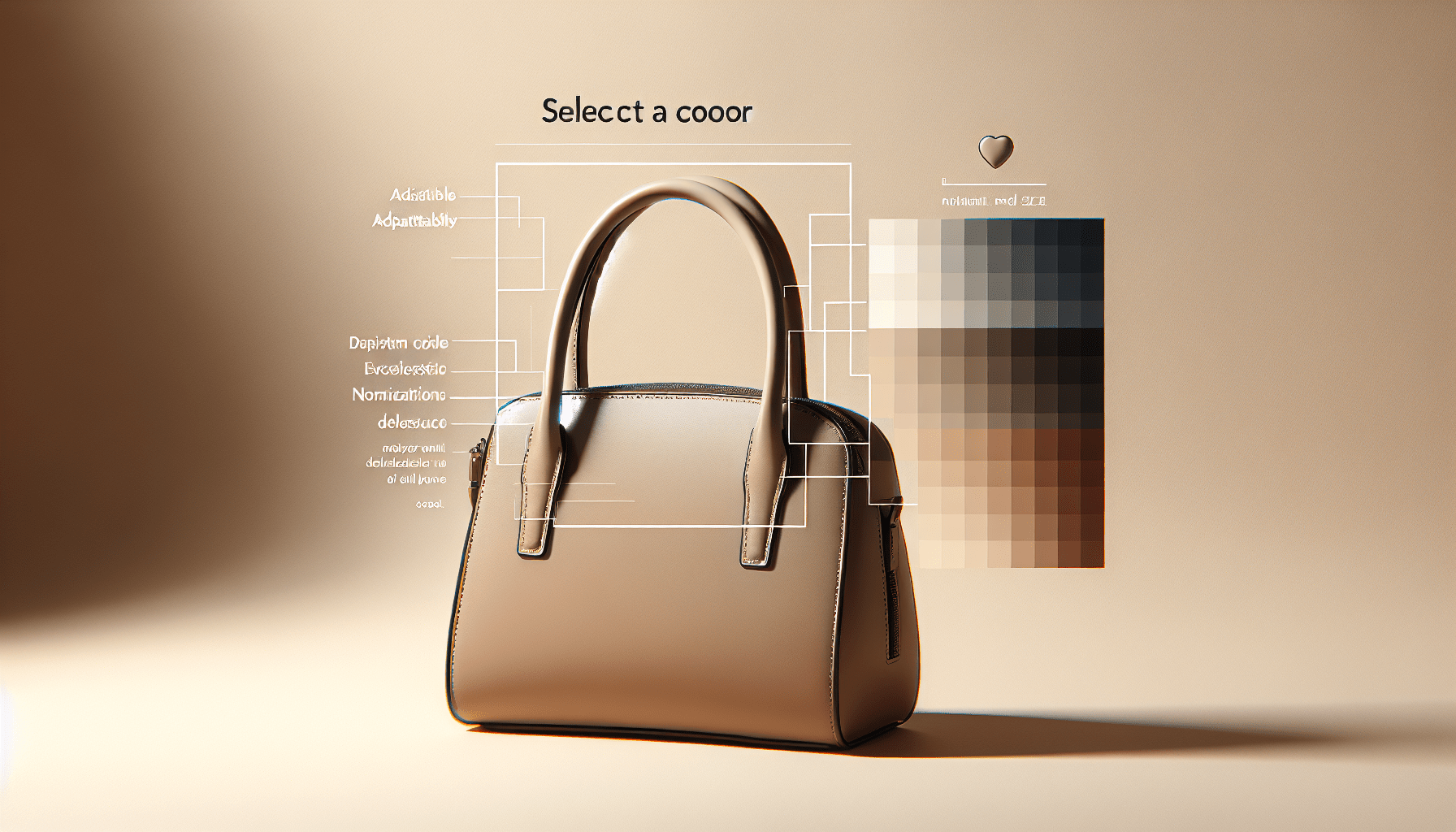How To Clean Leather Handbags
So you’ve got a fabulous leather handbag that you adore, but it’s starting to look a little worse for wear. Don’t worry, because we’ve got you covered! In this article, we will share some simple and effective tips on how to clean leather handbags, ensuring they maintain their beauty and longevity. Whether it’s removing stains, conditioning the leather, or preventing future damage, we’ll guide you on the best practices to keep your leather handbags looking as good as new. So let’s get started and give your beloved handbag the TLC it deserves!
1. Gather the Necessary Supplies
Before you begin cleaning your leather handbag, make sure you have all the necessary supplies. These include a soft cloth or sponge, leather cleaner, leather conditioner, warm water, a soft-bristled brush, rubbing alcohol, lint-free cloth or paper towels, leather protectant spray, cotton swabs, and white vinegar. Having these supplies ready will ensure that you are fully prepared to clean your handbag efficiently and effectively.
2. Preparing for Cleaning
Before diving into cleaning your leather handbag, there are a few essential steps to take in preparation. First, check the care label on the handbag to understand any specific instructions or precautions. This will help you determine the appropriate cleaning products to use and avoid potential damage.
Next, empty the contents of the handbag and remove any removable lining or compartments if possible. This will allow you to clean the handbag thoroughly and ensure that no dirt or debris is left behind.
Now it’s time to gently brush away any loose dirt and debris from the exterior of the handbag. Use a soft-bristled brush to remove any surface dirt, making it easier to clean the handbag later.
Lastly, test the leather cleaner in an inconspicuous area of the handbag to ensure that it does not cause any discoloration or damage. Apply a small amount of the cleaner to a hidden spot and gently rub it in. If there are no adverse effects after a few minutes, you can proceed with confidence.
3. Cleaning the Exterior
Once you’ve completed the preparation steps, it’s time to clean the exterior of your leather handbag. Start by dampening a soft cloth or sponge with warm water. Make sure the cloth or sponge is not soaking wet, as excessive moisture can damage the leather.
Next, apply a small amount of leather cleaner to the damp cloth or sponge. It’s essential to avoid using too much cleaner, as it can saturate the leather and potentially cause damage.
Using gentle circular motions, clean the exterior of the handbag. This circular motion helps to lift dirt and grime effectively. Be sure to cover all areas of the handbag, paying extra attention to areas that may be more prone to dirt buildup, such as the bottom and handles.
After cleaning, use a clean, damp cloth to remove any excess cleaner from the handbag. This step ensures that no residue is left behind, which could potentially attract more dirt in the future.
Now it’s time to dry the handbag. Use a lint-free cloth or paper towels to gently pat dry the exterior. Avoid using heat sources or direct sunlight to dry the handbag, as these can cause the leather to dry out and potentially lead to cracking or fading.
To restore moisture and keep the leather supple, apply a leather conditioner to the exterior of the handbag. Follow the manufacturer’s instructions for application, as different products may have different recommendations.
4. Cleaning the Interior
After taking care of the exterior, don’t forget to clean the interior of your leather handbag. Begin by emptying the handbag and removing any removable lining or compartments if possible. This will make it easier to clean the interior surfaces thoroughly.
To remove any dirt and debris from the interior, use a vacuum cleaner with a soft brush attachment. Gently vacuum the interior surfaces, paying attention to corners and crevices where dirt may accumulate.
Dampen a soft cloth or sponge with warm water, similar to the cleaning process for the exterior. Apply a small amount of leather cleaner to the damp cloth or sponge and gently clean the interior surfaces. Take care not to oversaturate the leather or use excessive force, as this can cause damage.
After cleaning, use a clean, damp cloth to remove any excess cleaner from the interior surfaces. Properly drying the interior is crucial to prevent any potential mold or mildew growth. Ensure that the handbag is thoroughly dry before reassembling any removable linings or compartments.
5. Treating Stains
Stains on a leather handbag can be a nuisance, but with the right approach, they can often be effectively treated. Here’s how to deal with common stains that may occur on your handbag.
Identify the type of stain
Before treating a stain, it’s crucial to identify the type of stain you’re dealing with. Different stains may require different treatment methods. Common types of stains include ink, grease, and water stains.
Blot the stain with a clean cloth
When you discover a stain, the first step is to gently blot the area with a clean cloth. This will help remove any excess liquid or residue, making it easier to treat the stain.
Test rubbing alcohol on an inconspicuous area
Before using rubbing alcohol on a visible area of the handbag, it’s essential to test it on an inconspicuous spot. Apply a small amount of rubbing alcohol to a cotton swab and rub it on a hidden area. If there are no adverse effects after a few minutes, you can proceed with treating the stain.
Dampen a cotton swab with rubbing alcohol
Once you’ve tested the rubbing alcohol, dampen a cotton swab with it and gently rub the stain in a circular motion. Take care not to rub too forcefully, as this can spread the stain further.
Blot the area with a clean, damp cloth
After treating the stain with rubbing alcohol, use a clean, damp cloth to blot the area again. This will help remove any remaining residue and alcohol from the leather.
Allow the handbag to air dry
Once you’ve treated the stain, allow the handbag to air dry naturally. Avoid using heat sources or direct sunlight to dry the leather, as this can cause it to dry out and potentially lead to cracking or fading.
6. Dealing with Grease Stains
Grease stains can be particularly challenging to remove from leather. But fear not, as there are steps you can take to effectively tackle those pesky stains.
Blot the excess grease with a clean cloth
When dealing with a grease stain, it’s crucial to first blot the area with a clean cloth. This will help remove any excess grease and prevent it from spreading further on the leather.
Sprinkle talcum powder or cornstarch on the stain
To absorb the remaining grease, sprinkle talcum powder or cornstarch on the stain. Ensure that the entire stained area is well-covered with a thin layer of the powder.
Let it sit overnight to absorb the grease
Allow the powder to sit on the stain overnight. This extended period will give it ample time to absorb the grease effectively.
Brush off the powder with a soft-bristled brush
After letting the powder sit overnight, use a soft-bristled brush to gently brush off the powder. Take care not to scrub too vigorously, as this can damage the leather.
Clean the area with a leather cleaner
To ensure that no residue remains, clean the area with a leather cleaner. Apply a small amount to a soft cloth or sponge and gently clean the stained area using circular motions.
Apply leather conditioner to restore moisture
To restore moisture and maintain the leather’s supple nature, apply a leather conditioner after removing the grease stain. Follow the manufacturer’s instructions for application to achieve the best results.
7. Removing Ink Stains
Ink stains on a leather handbag can be frustrating, but with a few simple steps, you can often remove them successfully. Here’s how to deal with ink stains effectively.
Act quickly and blot the ink stain immediately
When you notice an ink stain on your leather handbag, it’s crucial to act quickly. Use a clean cloth to blot the ink stain immediately. The faster you address the stain, the easier it will be to remove.
Dampen a cotton swab with rubbing alcohol
Dampen a cotton swab with rubbing alcohol, then gently dab the ink stain. Aim to lift the ink from the leather without spreading it further. Take care not to rub too forcefully, as this can cause the ink to penetrate deeper into the leather.
Blot the area with a clean cloth
After treating the ink stain with rubbing alcohol, use a clean cloth to blot the area again. This will help remove any residual ink and rubbing alcohol from the leather surface.
Repeat the process until the stain is gone
If the ink stain persists, repeat the process of dabbing the stain with rubbing alcohol and blotting with a clean cloth. This may need to be done several times to completely remove the ink.
Allow the handbag to air dry
Once the ink stain has been treated, allow the handbag to air dry naturally. Avoid using heat sources or direct sunlight, as these can cause damage to the leather.
8. Handling Water Stains
Water stains on a leather handbag can occur when the leather becomes damp and then dries naturally. While they can be unsightly, they can often be effectively treated. Here’s how to handle water stains on your leather handbag.
Blot the excess water with a clean cloth
When you notice a water stain on your leather handbag, the first step is to blot the excess water with a clean cloth. This will help remove any surface moisture and prevent further damage.
Let the handbag air dry naturally
To prevent further water damage, allow the handbag to air dry naturally. Avoid using heat sources or direct sunlight, as these can cause the leather to dry out and potentially lead to cracking or fading.
Do not use heat sources or direct sunlight
It’s crucial to avoid using heat sources or direct sunlight to dry a water-stained leather handbag. Excessive heat can damage the leather and lead to undesirable effects.
Once dry, apply leather conditioner to restore moisture
After the handbag has completely dried, apply a leather conditioner to restore moisture and keep the leather supple. Follow the manufacturer’s instructions for application to achieve optimal results.
9. Preventing Future Damage
To prolong the lifespan of your leather handbag and keep it looking its best, it’s essential to take preventive measures to avoid future damage. Here are some tips to help you protect your handbag:
Avoid exposing the leather handbag to excessive sunlight
Excessive exposure to sunlight can cause the leather to fade and dry out. Therefore, it’s essential to avoid leaving your handbag in direct sunlight for extended periods. If possible, store your handbag away from windows or use a window treatment that blocks out harmful UV rays.
Do not place the handbag on rough or abrasive surfaces
Rough or abrasive surfaces can scratch or damage the leather of your handbag. To prevent this, always place your handbag on a clean, soft surface when not in use. Avoid placing it on rough or textured surfaces that could potentially cause scratches.
Store the handbag in a cool, dry place
Humidity can have detrimental effects on leather, causing it to warp or crack. To prevent this, store your handbag in a cool, dry place. Avoid storing it in places prone to moisture, such as basements or bathrooms.
Use a leather protectant spray to create a barrier
A leather protectant spray can help create a barrier against dirt, moisture, and stains. Before using any protectant, make sure to read and follow the manufacturer’s instructions carefully. Apply the spray evenly on the exterior of your handbag and allow it to dry completely before use.
10. Regular Maintenance
Regular maintenance is crucial for keeping your leather handbag in top condition for years to come. By following a few simple steps, you can ensure that your handbag remains clean and well-maintained.
Wipe down the handbag regularly with a soft cloth
To prevent dirt and dust buildup, wipe down your handbag regularly with a soft cloth. This will help maintain its cleanliness and prevent the need for deep cleaning frequently.
Apply leather conditioner every few months
Applying a leather conditioner every few months will help keep the leather moisturized and supple, preventing it from drying out or cracking. Follow the manufacturer’s instructions for application, as different products may have different recommendations.
Avoid using harsh chemicals or cleaning products
When cleaning or maintaining your leather handbag, it’s crucial to avoid using harsh chemicals or cleaning products that could potentially damage the leather. Stick to using specifically designed leather cleaners and conditioners.
Keep the handbag away from sharp objects
To prevent scratches or punctures, keep your handbag away from sharp objects. This includes both when you’re using the handbag and when storing it. Be mindful of where you place the handbag to avoid unnecessary damage.
Handle the handbag with clean hands
To prevent transferring oils, dirt, or other substances onto your handbag, always handle it with clean hands. Avoid touching the leather with dirty or greasy hands, as this can lead to stains or discoloration.
By following these steps and incorporating regular maintenance into your routine, you can enjoy your leather handbag for years to come. Remember, prevention is key, so take the necessary precautions and treat any stains or damage promptly. With proper care, your leather handbag will continue to look stylish and chic for many seasons ahead!



